Newton's First Law of Motion
Newton's First Law of Motion: Overview
This topic consists of various concepts like Force,Newton's Laws of Motion,Newton's First Law of Motion, etc.
Important Questions on Newton's First Law of Motion
Physical independence of force is a consequence of,
If a cricketer catches a ball of mass moving with a velocity of , then he experiences a force of (Time taken to complete the catch is )
A monkey is descending from the branch of a tree with constant acceleration. If the breaking strength is 75% of the weight of the monkey, the minimum acceleration with which monkey can slide down without breaking the branch is
If suddenly the gravitational force of attraction between earth and a satellite revolving around it becomes zero, then the satellite will –
A block of mass is in equilibrium with the help of three identical strings with one end of each string connected with the ceiling and other with the block and the angle between any two string is and all the string makes an angle of with the vertical. Find the tension in the string.
The magnitude of acceleration of block , as shown in the figure, is
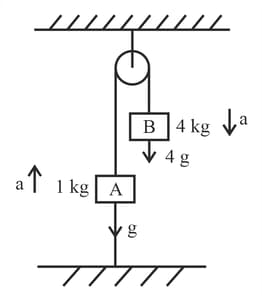
A book rests on your desk. An additional force is applied on this bock in verfically downward direction. Normal reaction on this book will be?
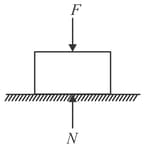
Find the tension needed to hold the cart in equilibrium, if there is no friction.
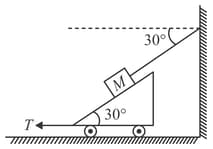
A bird [light weight] is sitting on streched telephone wire. If its weight is then the additional tension produced by it in the wire will be
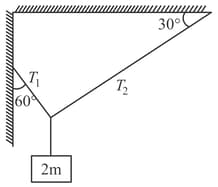
Calculate in the above figure
Two beads of man and are connected with light rigid rod. The system in placed b/w rough floor and smooth vertical wall. The coefficient of friction b/w rough floor and bead of mass is .which of the following is correct.
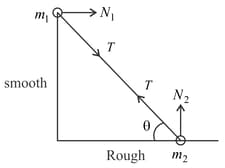
The concept of Inertia is explained in
In the system shown in figure , the scale of the spring is calibrated in newton.

Assume that
- Pulleys are massless and frictionless
- Strings are massless
A man of mass is standing on a board and pulling the board of mass up with force by the pulley system as shown. Normal reaction between man and board is
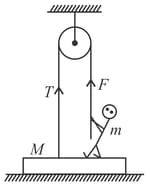
The pulleys and string are massless. No friction on the inclined plane. The inclined plane is fixed. The mass of block is . the mass of block is . The angle of inclination of the inclined plane is . Find the normal reaction on offered by inclined surface during its motion.
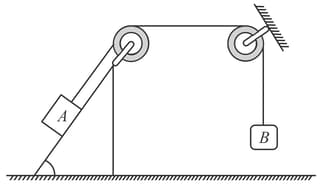
Two identical rollers each of weight are supported by an inclined plane, making an angle of with the vertical, and a vertical wall. Find the reaction at the points of contact . Assume all the surfaces to be smooth.
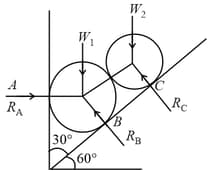
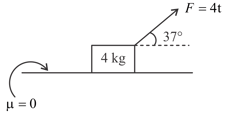
Find the velocity of the block when block loses contact with the floor.
You have a ring balanced at the center of the table by three forces and . The forces and have components
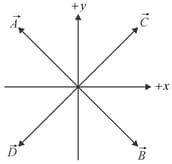
The force is required to make the ring stationary at the centre of the table. Which one of the vectors in the diagram could represent ?
A block of mass is kept on a smooth horizontal floor. A variable force is acting on the block at an angle a with the horizontal. At initial moment the block is at rest (the situation shown in the figure). The block leaves the contact with floor at . The time at which its displacement from initial position is half the displacement of the block till time is:

State Newton's first law of motion.
